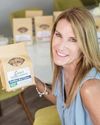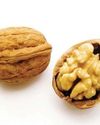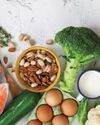
Once a niche food if there ever was one, nutritional yeast—or “nooch,” as the cool kids call it—has become all the rage lately, thanks to a swell of enthusiasm for plant-based eating. Its recent Insta-stardom has the non-vegan world curious as to what it is and if it does indeed make everything it touches taste like cheese. Here’s what you need to know about this wonder ingredient that deserves a spot in your spice rack.
What Is Nutritional Yeast?
Not to be confused with brewer’s yeast or the active dried yeast used to make bread and pizza crust, nutritional yeast is a deactivated form of the microorganism Saccharomyces cerevisiae with no leavening powers (please, don’t try to make a loaf of sourdough with it). It’s produced by culturing the yeast on a sugar-rich medium, such as molasses, for several days. After this growth period, the yeast is heated (i.e., pasteurized) and then dried for packaging. Since yeasts are members of the fungi family, like mushrooms, nutritional yeast is most certainly appropriate for use by vegans.
Why So Cheesy?
Even if it suffers from a less-than fun name, nutritional yeast brings both savory and salty flavors to foods that are typically mild in taste. This distinctive flavor profile can largely be attributed to its abundance of naturally occurring glutamate, an amino acid that interacts with specific taste cells in the tongue to unleash an umami, Parmesan-like wave of flavor. This makes the yellow flakes a good option for those who’ve ditched dairy, or for anyone who wants to add a cheesy, umami-rich punch to a savory dish.
Why It’s Good for You
This story is from the February 2021 edition of Better Nutrition.
Start your 7-day Magzter GOLD free trial to access thousands of curated premium stories, and 8,500+ magazines and newspapers.
Already a subscriber ? Sign In
This story is from the February 2021 edition of Better Nutrition.
Start your 7-day Magzter GOLD free trial to access thousands of curated premium stories, and 8,500+ magazines and newspapers.
Already a subscriber? Sign In

Strike A Healing Chord
Soothe your mind, body, and spirit with three simple sound therapy techniques for self-care.

Laura's Gourmet Granola
If you’re tired of granola that’s more candy than health food, chef and entrepreneur Laura Briscoe’s offerings are just what you’ve been looking for.

News Bites
Caffeine, Peanuts, CoQ10, and Iron Deficiency.

The Overlooked Keys to a Healthy Gallbladder
Keep your bile thin and free-flowing by focusing on supportive foods, supplements, and physical activity.

Go Nutty This Year
This über-healthy alternative to traditional lattes features homemadewalnut “mylk,” along with antioxidant-rich green tea and berries.

The Three Stages of Infection
What you need before, during and after an illness, and why you need different fixes for each stage.
Taming the Flames
How to beat back chronic inflammation and protect yourself from related disease.

Deconstructing the Flexitarian Diet
How being a part-time vegan can make you healthier.

Brain Regain
How one senior used a leptin-focused diet (high-fat, no carbs) to recover from a cognitive injury, reconnect with his family, and reclaim his health.

Healthy Aging— Head To Toe
Science-backed supplements to protect all your parts.